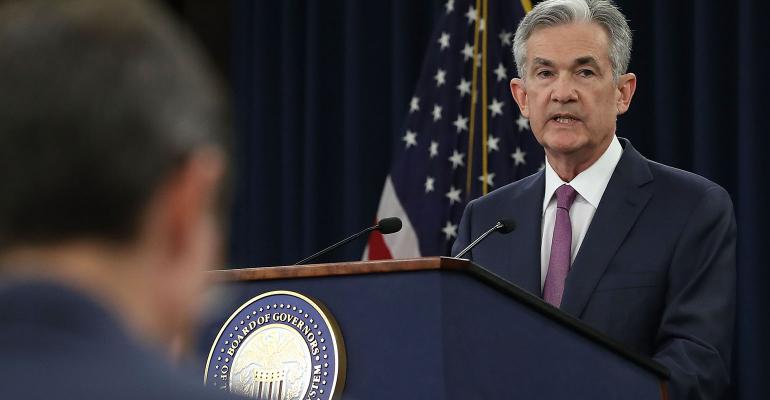Jerome Powell did as was broadly expected in his Jackson Hole speech, renewing the Federal Reserve’s hawkish vows. Now that the dust has settled, here are four views on the direction of the main assets in the coming months:
- Stocks have more downside in the immediate term (next two weeks)
- The Cboe Volatility Index (VIX) should stay supported
- Short-term yields should continue trending higher, but longer-term yields remain relatively muted. The real yield curve should continue flattening quite aggressively
- The dollar rally should soon peter out
Powell’s speech triggered a rise in short-term real yields. The real peak Fed Funds has a very tight relationship with the S&P 500. Real peak Fed Funds has risen lately -- including another 21 basis points on Friday with Powell’s speech –- but the S&P 500 has lagged the move so far, suggesting more equity downside is in the cards.
However, positioning in equities overall remains very short, increasing the risk of a squeeze. Sentiment has been improving, while internals such as the advance-decline line, the net number of stocks making new 52-week highs and the number trading above their 200-day moving average are constructive.
Nevertheless, we remain in a bear market, and net gamma is now negative, meaning a greater potential of more short-term follow-through on the downside.
Volatility should thus remain supported. The VIX stood out as an attractive Jackson Hole hedge, and it has since risen, outperforming the move expected based on the fall in the S&P 500.
Short-term yields will likely continue to experience upward pressure, but as long the dynamic persists that this is a garden-variety rise in inflation -- easily solved by some fairly modest rate hikes -- then longer-term yields will continue to “under-reflect” the increase in rates.
The drop in term premium in recent months embodies this dynamic. Inflation volatility is very high, which would normally demand a higher term premium from bond holders. That it is falling implies there is a strong belief -- misplaced in my view -- that inflation will soon revert to a low-and-stable regime.
As long as term premium remains contained, flattening pressure on the nominal yield curve will continue. However, the real yield curve should continue to flatten more aggressively as the Fed maintains its hawkish stance and inflation (cyclically) begins to ease.
The flatter yield curve signals the increasing unattractiveness of the real return for foreign buyers of Treasuries, which will be a strengthening headwind for the dollar. The Japanese -- who are the largest holders of USTs-- have been notably absent from the market this year. This is not a great surprise given a Japan-based buyer of 10-year USTs who hedges the FX loses about 125 basis points per annum versus buying a 10-year Japanese government bond.
Once the knee-jerk reaction of Jackson Hole is out of the way, resistance to the dollar -- in the absence of a global financial shock or an acute risk-off event -- is likely to mount as a hawkish Fed keeps pressure on the real yield curve.





